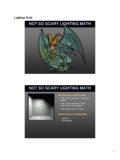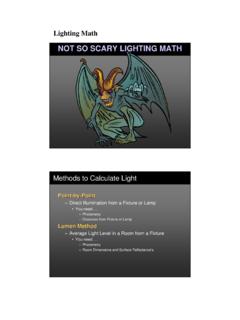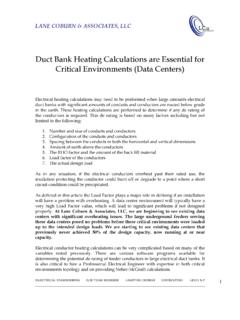Transcription of HVE The Math behind arbitrary precision - hvks.com
1 The math behind arbitrary precision 28 August 2013 Page 1 The math behind arbitrary precision for integer and floating point arithmetic. By Henrik Vestermark Abstract: We are all used to the fast microprocessors available nowadays and computational speed of basic arithmetic, trigonometric or logarithms functions is done at lighting fast speed. However when building an arbitrary integer and floating point packages that can handle decimal in the range from a few to several millions digits it is s all back to the basic of math in order to build an arbitrary precision packages with reasonable speed. This paper describes the underlying math behind this package. Introduction: Building an arbitrary software package that can handle all arithmetic for integers and floating point for any precision , it is down to the basic of simple math .
2 This paper describe what formula and math that lies behind the arbitrary precision packages starting with arbitrary integer precision following with the floating point math . For the floating point math when a floating point number is broken down to its base component of <integer>, <fraction> and <exponent> it too use the integer precision math to do the calculation for floating point. After the basic floating point operators like +,-,*,/ we build on these functions to implement , Logarithm and exponential functions continuing with Trigonometric and Hyperbolic functions. For each of these functions there is a describing on various optimizations technics to improve performance particular when needed precision in exceed 100 digits and going into the 100,000 digits precision and higher.
3 The math behind arbitrary precision 28 August 2013 Page 2 Contents The math behind arbitrary precision for integer and floating point arithmetic.. 1 Abstract: .. 1 Introduction: .. 1 Integer Arithmetic .. 3 Addition: .. 3 Subtraction: .. 4 Multiplication:.. 4 Division & Remainder: .. 5 Integer power xy: .. 7 Integer power xy modulus z .. 7 Checking for prime numbers: .. 8 Performance of arbitrary Integer precision : .. 8 Floating point arithmetic: .. 10 Addition: .. 11 Subtraction: .. 12 Multiplication:.. 13 Division: .. 13 Performance of arbitrary Floating point precision : .. 15 Sqrt: .. 17 Elementary functions: .. 19 Logarithmic & Exponential functions: .. 20 Loge(x): .. 20 Log10(x): .. 23 Exp(x): .. 23 Pow(x,y).
4 25 Constants: Loge(2), Loge(10) & .. 26 Trigonometric functions: .. 29 Sin(x): .. 29 Cos(x):.. 30 Tan(x):.. 31 ArcSin(x): .. 31 ArcCos(x):.. 34 ArcTan(x):.. 34 Hyperbolic functions:.. 36 Sinh(x): .. 36 Cosh(x):.. 36 Tanh(x):.. 37 ArcSinh(x): .. 38 ArcCosh(x):.. 38 ArcTanh(x):.. 38 Performance: .. 38 The math behind arbitrary precision 28 August 2013 Page 3 Integer Arithmetic In integer arithmetic we use the notation in for an n digit integer number i where n > 0. In our description we assume the integer is in base 10 to simplify the description of the math behind the scenes. However in our actually implementation of the arbitrary precision packages we allow the integer number to be stored in any bases between base 2 and base 256 for better storage utilization.
5 An integer number stored in base 256 requires 8 times less digits than if it was stored in base 2. Also we denote i[n] as the most significant digit of i and i[0] the least significant digit of i. The integer in can also be described for any given base as: 0121]0[]1[]2[..]1[][ iiininiinnn+++ += For Base =10 you get: ]0[10]1[10]2[..10]1[10][21iiininiinnn+++ += For the number in the notation i[p] for p > n always return 0. Addition: To implement addition we use the simple school book method by adding each digits starting from the least significant digit of the number to the highest. Consider two positive integers an and bm , the result ck of adding an and bm together are: ;]1),[max()0!(10/)][][(10)%][][(][)),max (.
6 0,0(carrymnccarryifcarryibiacarrycarryib iaicmnicarryfor=+=++=++=== If either an or bm are negative we resolve the sign using below table + bm 0 bm< 0 an 0 C=an+bm C=an-|bm| an < 0 C=bm-|an| C=-(|an|+|bm|) The math behind arbitrary precision 28 August 2013 Page 4 Subtraction: To implement subtraction we again using the simple school book method by subtracting each digits starting from the least significant digit of the number to the highest. Consider two positive integers an and bm the result ck of subtracting an and bm are: If either an or bm are negative we resolve the sign using below table - bm 0 bm< 0 an 0 C=an-bm C=an+|bm| an < 0 C=-(|an|+bm) C=-(|an|+|bm|) Multiplication: Multiplication is also trivial mnmncba+=* And as for the division we divide the case into two scenarios: one where m=1 and one where m>1.)
7 For m=1 we use the recursion: ;]1[)0!()*][(10)%*][(][)..0,0(11carryncc arryifcarrybiacarrycarrybiaicnicarryfor= +=+=+=== For m>1 we repeatedly use the above mention formula for multiplying at single digit and the addition of the intermediate results. positiveiscelsenegativeisccarryifcarryic carryibiacarrymniforcarry)10(;10%][)10/] [][9()),max(..0(10<=+ +===The math behind arbitrary precision 28 August 2013 Page 5 ;10*][*)..1(]0[*ikknnktmpccibatmpmiforba c+==== Notice that multiply the intermediate result with 10i is easy since you just post fix the temp result with i number of zeros. The last algorithm can be enhanced in several ways. First of all you notice that the tmp result only can have the base different number of outcomes.
8 For the base 10 it is 10 different results. Instead of calculating it each time we can store the tmp results and then reused the temp result every time we encounter the same digit b[i]. ;10*][*)()..1(]0[*][][][]0[iibkknibibnbk tmpccibatmpexistnotdoestmpifmiforbatmpc+ ===== Although this improves the speed it doesn t beat the performance of using fast Fourier multiplication. It is beyond the scope of this paper to give a details explanation of the algorithm, but readers can reference [1]. However basically you convert the an and bm via a series of Fourier transformation into waves then add them together and then inverse the result back via a Fourier transformation to the digital domain. If either an or bm are negative we resolve the sign using below table * bm = 0 bm< 0 an 0 C=an*bm C=-(an*|bm|) an < 0 C=-(|an|*bm) C=|an|*|bm| Division & Remainder: There are several approaches you can take in order to calculate the division.
9 In it s simple form solving mnba You can repeatedly subtract bm from an until the condition an<bm is meet and then the number of times you could subtract bm is the integer result of this division. an is called the dividend and bm is called the divisor or denominator. The result of the division let s call it ck is the quotient of the division. If the continuation subtraction bm into an does not result The math behind arbitrary precision 28 August 2013 Page 6 in an=0 then an contains the remaining portion of the division and lets called is dj. For shorthand this is sometimes written as: jkmndREMcba= If bm is a single digit we do it by school book manner by dividing the single digit b1 Into an starting at the most significant digit of a[n].
10 The result is the most significant digit of the quotient c[k]. Then add the remaining of that division into a s second most digit and repeat the process until all an digit has been divided. Now ck is the quotient of the division and the last remaining digit is then dj. 11])%[*10(/])[*10(][)..0,0(biaremrembiar emicniremfor+=+=== Now if bm is more than a single digit (m>1) we resort to the processes of subtracting bm from an. njkkmnnmnkadccbaabawhilec=+= =>=1)(0 However we quickly find out that we will ran into problem when dividing a large number an that is several magnitude higher than bm. let s assume that an is a number of 8 digits or a8 magnitude is in the range of 108 and bm is a two digits number of magnitude 102 then you will have to loop through the subtraction approx.






